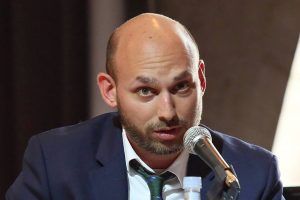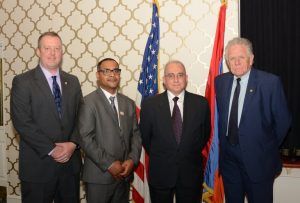Belfry Monument dedicated to the memory of Armenian Genocide victims to be placed in Stepanakert in late March 2015

An 18-meter high, traditional belfry with a modern look, marble arches and a cross will be placed in Stepanakert.
Citizens of Stepanakert will pay tribute to the victims of the Armenian Genocide at a new Belfry Monument that is under construction and will be opened in late March 2015. The creators of the monument are Vladimir and Mikayel Sargsyan. They came up with the idea when they were planning the renovation of the memorial complex in Stepanakert ten years ago.
“The idea that was presented a decade ago is now a reality. The belfry will make the memorial complex complete. It will be the tallest structure, and the arches and cross of the Belfry will be seen from all parts of the city,” architect Vladimir Sargsyan said in an interview with ArmenPress, adding that project implementation was made possible through donations and government funding.
The idea of building a “Belfry” is very symbolic. When presenting the idea, Sargsyan was inspired by Paruyr Sevak’s poem “Unsilenced Belfry”. After reading the poem a couple of times, Sargsyan understood that he had to create an “unsilenced” belfry as tribute to the victims of the Armenian Genocide. According to the plan, the structure will literally be “unsilenced”.
“Visitors will be able to ring the bell, and the sounds of millions of bells will let everyone know that Armenians were victims of genocide and that mankind still remembers that tragedy even after 100 years,” Vladimir Sargsyan said.
Construction of the monument began in June 2014.The poor climate can’t hinder construction, and the architect assures that construction will end in late March 2015.
The architect doesn’t know how the opening ceremony will be held, but he knows one thing for sure-a liturgy will be held and the monument dedicated to the memory of the victims of the Armenian Genocide must be anointed, incense must be burned, candles must be lit and a clergyman’s prayer must be heard in Artsakh.




 Արևելահայերեն
Արևելահայերեն Արևմտահայերեն
Արևմտահայերեն Русский
Русский






